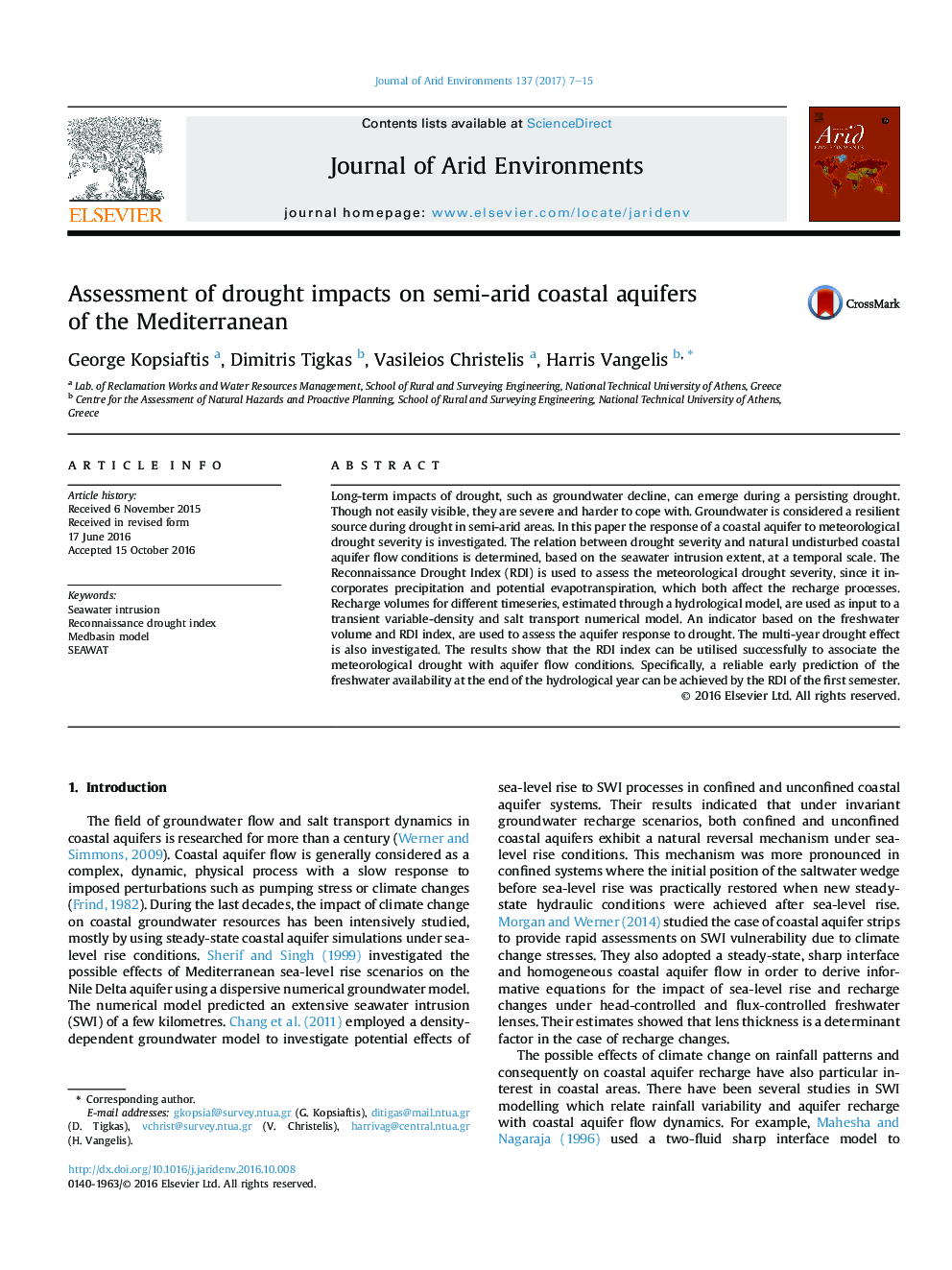| Article ID | Journal | Published Year | Pages | File Type |
|---|---|---|---|---|
| 5744418 | Journal of Arid Environments | 2017 | 9 Pages |
Abstract
Long-term impacts of drought, such as groundwater decline, can emerge during a persisting drought. Though not easily visible, they are severe and harder to cope with. Groundwater is considered a resilient source during drought in semi-arid areas. In this paper the response of a coastal aquifer to meteorological drought severity is investigated. The relation between drought severity and natural undisturbed coastal aquifer flow conditions is determined, based on the seawater intrusion extent, at a temporal scale. The Reconnaissance Drought Index (RDI) is used to assess the meteorological drought severity, since it incorporates precipitation and potential evapotranspiration, which both affect the recharge processes. Recharge volumes for different timeseries, estimated through a hydrological model, are used as input to a transient variable-density and salt transport numerical model. An indicator based on the freshwater volume and RDI index, are used to assess the aquifer response to drought. The multi-year drought effect is also investigated. The results show that the RDI index can be utilised successfully to associate the meteorological drought with aquifer flow conditions. Specifically, a reliable early prediction of the freshwater availability at the end of the hydrological year can be achieved by the RDI of the first semester.
Related Topics
Physical Sciences and Engineering
Earth and Planetary Sciences
Earth-Surface Processes
Authors
George Kopsiaftis, Dimitris Tigkas, Vasileios Christelis, Harris Vangelis,
